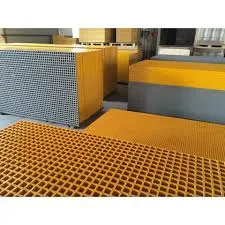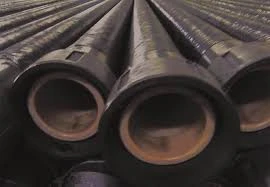
-
 Afrikaans
Afrikaans -
 Albanian
Albanian -
 Amharic
Amharic -
 Arabic
Arabic -
 Armenian
Armenian -
 Azerbaijani
Azerbaijani -
 Basque
Basque -
 Belarusian
Belarusian -
 Bengali
Bengali -
 Bosnian
Bosnian -
 Bulgarian
Bulgarian -
 Catalan
Catalan -
 Cebuano
Cebuano -
 China
China -
 China (Taiwan)
China (Taiwan) -
 Corsican
Corsican -
 Croatian
Croatian -
 Czech
Czech -
 Danish
Danish -
 Dutch
Dutch -
 English
English -
 Esperanto
Esperanto -
 Estonian
Estonian -
 Finnish
Finnish -
 French
French -
 Frisian
Frisian -
 Galician
Galician -
 Georgian
Georgian -
 German
German -
 Greek
Greek -
 Gujarati
Gujarati -
 Haitian Creole
Haitian Creole -
 hausa
hausa -
 hawaiian
hawaiian -
 Hebrew
Hebrew -
 Hindi
Hindi -
 Miao
Miao -
 Hungarian
Hungarian -
 Icelandic
Icelandic -
 igbo
igbo -
 Indonesian
Indonesian -
 irish
irish -
 Italian
Italian -
 Japanese
Japanese -
 Javanese
Javanese -
 Kannada
Kannada -
 kazakh
kazakh -
 Khmer
Khmer -
 Rwandese
Rwandese -
 Korean
Korean -
 Kurdish
Kurdish -
 Kyrgyz
Kyrgyz -
 Lao
Lao -
 Latin
Latin -
 Latvian
Latvian -
 Lithuanian
Lithuanian -
 Luxembourgish
Luxembourgish -
 Macedonian
Macedonian -
 Malgashi
Malgashi -
 Malay
Malay -
 Malayalam
Malayalam -
 Maltese
Maltese -
 Maori
Maori -
 Marathi
Marathi -
 Mongolian
Mongolian -
 Myanmar
Myanmar -
 Nepali
Nepali -
 Norwegian
Norwegian -
 Norwegian
Norwegian -
 Occitan
Occitan -
 Pashto
Pashto -
 Persian
Persian -
 Polish
Polish -
 Portuguese
Portuguese -
 Punjabi
Punjabi -
 Romanian
Romanian -
 Russian
Russian -
 Samoan
Samoan -
 Scottish Gaelic
Scottish Gaelic -
 Serbian
Serbian -
 Sesotho
Sesotho -
 Shona
Shona -
 Sindhi
Sindhi -
 Sinhala
Sinhala -
 Slovak
Slovak -
 Slovenian
Slovenian -
 Somali
Somali -
 Spanish
Spanish -
 Sundanese
Sundanese -
 Swahili
Swahili -
 Swedish
Swedish -
 Tagalog
Tagalog -
 Tajik
Tajik -
 Tamil
Tamil -
 Tatar
Tatar -
 Telugu
Telugu -
 Thai
Thai -
 Turkish
Turkish -
 Turkmen
Turkmen -
 Ukrainian
Ukrainian -
 Urdu
Urdu -
 Uighur
Uighur -
 Uzbek
Uzbek -
 Vietnamese
Vietnamese -
 Welsh
Welsh -
 Bantu
Bantu -
 Yiddish
Yiddish -
 Yoruba
Yoruba -
 Zulu
Zulu
Feb . 14, 2025 01:36
Back to list
frp handrail
FRP handrails, or fiber-reinforced plastic handrails, have steadily been gaining acceptance in various industries due to their incredible durability, versatility, and cost-effectiveness. Emerging as a preferable alternative to traditional materials such as wood, steel, and aluminum, FRP handrails offer unique advantages that stem from their material composition and engineering.
What truly affirms the trustworthiness of FRP handrails is their track record in real-life applications. Industry specialists cite numerous case studies showcasing FRP handrails maintaining their integrity in extreme conditions. A petrochemical facility in Texas, which replaced its traditional steel handrails with FRP systems, reported significantly decreased maintenance costs accompanied by improved safety records. Similarly, a coastal resort in Florida experiencing relentless saltwater exposure successfully transitioned to FRP for their railings, resulting in enhanced guest safety without the necessity for frequent replacement and repairs. This kind of empirical evidence offers assurance to those considering FRP handrail systems. In terms of practical experience, the lightweight nature of FRP handrails simplifies the installation process remarkably. Unlike steel or wood, FRP systems can typically be installed without heavy machinery—a notable advantage on high-rise buildings or in remote locations. Additionally, the modular design of FRP handrail systems allows for quick assembly and customization, accommodating unique architectural requirements or retrofitting existing structures. Maintenance, usually a significant cost factor, is almost negligible with FRP, requiring no special treatments and withstanding challenging conditions without frequent need for attention. The market appeal of FRP handrails is also bolstered by their environmental benefits. As the global focus sharpens on sustainability, FRP emerges as an eco-friendly option. Their production involves less energy than traditional steel manufacturing, and their longevity means fewer resources are consumed over time, aligning with greener construction practices. In conclusion, FRP handrails are solidifying their position as a staple in modern construction owing to their high-performance characteristics and cost efficiencies. Their adoption across industries with stringent safety and durability requirements stands as a testament to their superior engineering and reliability. For anyone choosing railing systems, FRP handrails represent an investment in long-term peace of mind, offering unparalleled benefits today, tomorrow, and for decades to come.


What truly affirms the trustworthiness of FRP handrails is their track record in real-life applications. Industry specialists cite numerous case studies showcasing FRP handrails maintaining their integrity in extreme conditions. A petrochemical facility in Texas, which replaced its traditional steel handrails with FRP systems, reported significantly decreased maintenance costs accompanied by improved safety records. Similarly, a coastal resort in Florida experiencing relentless saltwater exposure successfully transitioned to FRP for their railings, resulting in enhanced guest safety without the necessity for frequent replacement and repairs. This kind of empirical evidence offers assurance to those considering FRP handrail systems. In terms of practical experience, the lightweight nature of FRP handrails simplifies the installation process remarkably. Unlike steel or wood, FRP systems can typically be installed without heavy machinery—a notable advantage on high-rise buildings or in remote locations. Additionally, the modular design of FRP handrail systems allows for quick assembly and customization, accommodating unique architectural requirements or retrofitting existing structures. Maintenance, usually a significant cost factor, is almost negligible with FRP, requiring no special treatments and withstanding challenging conditions without frequent need for attention. The market appeal of FRP handrails is also bolstered by their environmental benefits. As the global focus sharpens on sustainability, FRP emerges as an eco-friendly option. Their production involves less energy than traditional steel manufacturing, and their longevity means fewer resources are consumed over time, aligning with greener construction practices. In conclusion, FRP handrails are solidifying their position as a staple in modern construction owing to their high-performance characteristics and cost efficiencies. Their adoption across industries with stringent safety and durability requirements stands as a testament to their superior engineering and reliability. For anyone choosing railing systems, FRP handrails represent an investment in long-term peace of mind, offering unparalleled benefits today, tomorrow, and for decades to come.
Next:
Related Products









